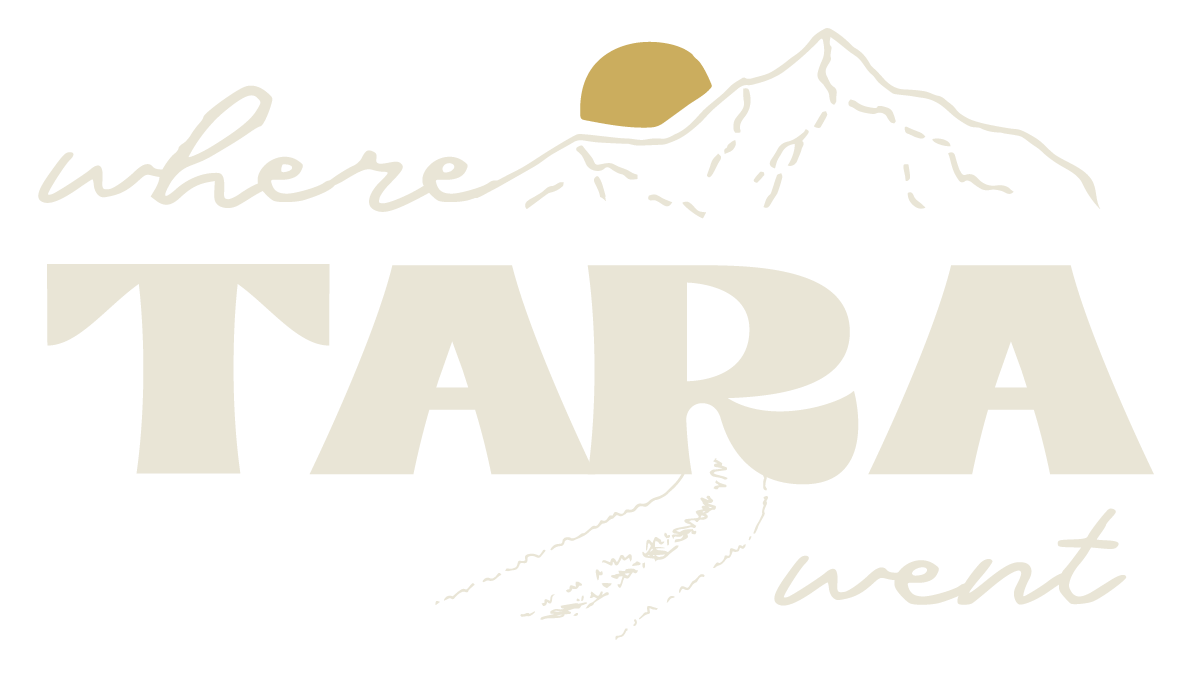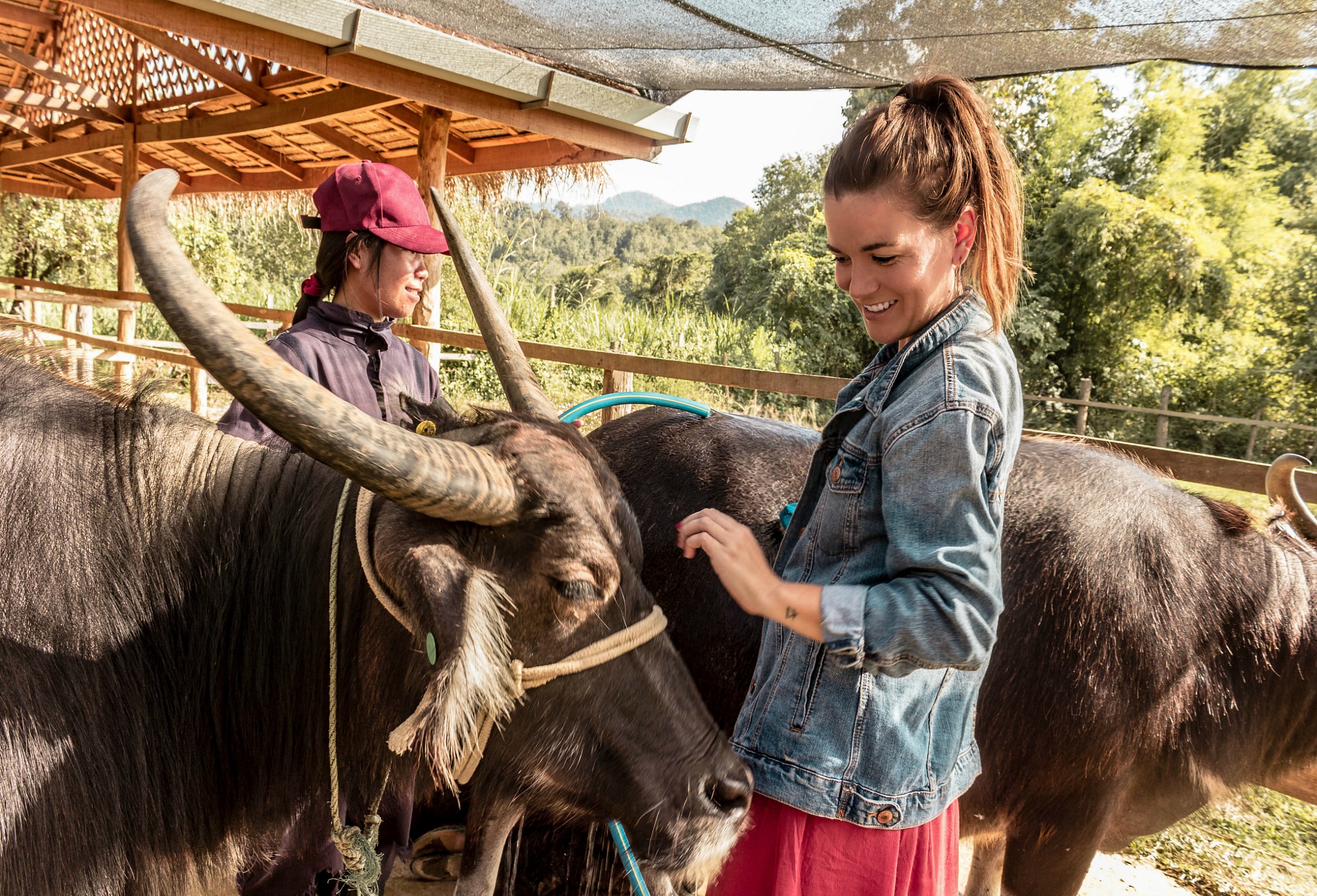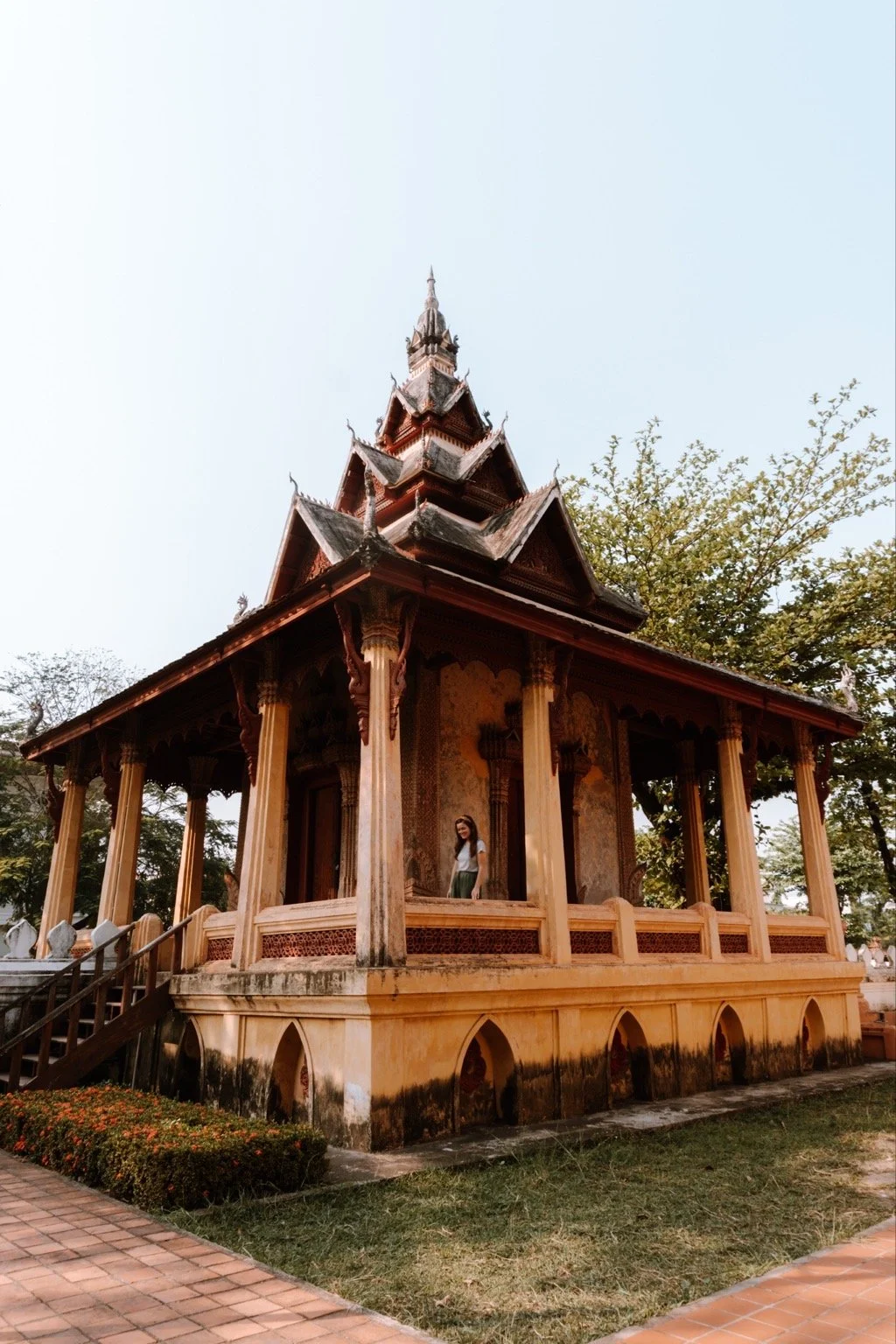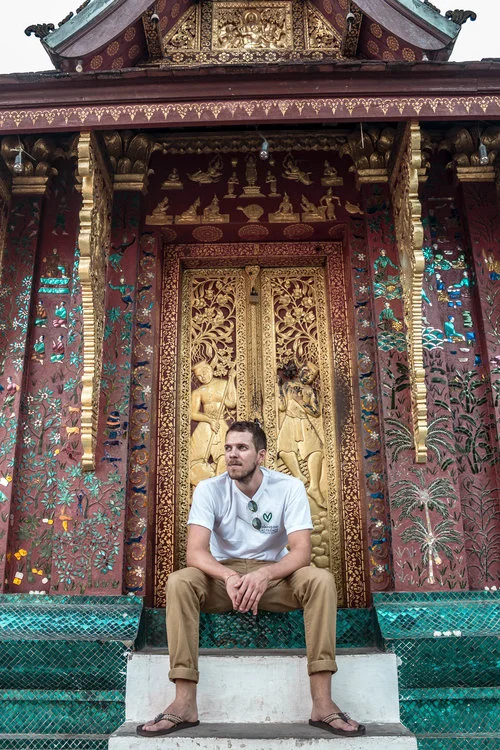how to visit the first buffalo dairy in Laos
For such a small little “city” in the middle of a country no one talks much about, there are a number of social enterprises doing big things in Luang Prabang. One of these important businesses is Laos Buffalo Dairy.
When a good majority of people look at my life, they often think it seems a bit crazy {despite so many other people doing it but I digress}. Writing for a living, traveling from here to there, a lot of people might think it’s ridiculous. Which is probably why when I imagine Rachel, Matt, Steven, and Susie, the business partners behind Laos Buffalo Dairy, telling their family and friends back in the U.S. and Australia that they were going to set up a social enterprise buffalo dairy in Laos, I can absolutely visualize the reactions they got.
I mean, it sounds absurd, right? Who moves to a country most people have never heard of to set up a buffalo dairy that will give back to surrounding villages, help boost the livelihood of farm animals in the area, produce world-class dairy products served in an on-site cafe, and offer language lessons to local staff and veterinarians?!?
People with big vision, guys. That’s who.
HOW IT ALL STARTED
Susie, Steven, Rachel, and Matt were living the high-life in Singapore when they experienced what they call “a mid-life crisis with a purpose rather than a Porsche”. The two families moved to Luang Prabang where they owned and operated a guesthouse…right next door from where I was staying as a volunteer in 2015 and living as the Women’s Empowerment Project Coordinator in 2016. As a matter of fact, I met Rachel and Susie in 2015 at the guesthouse. I ate Rachel’s french toast with dragonfruit there almost every Sunday morning in 2016, which was delicious just by the way.
After making the move to Laos, a country with no shortage of buffalo, the four expats were shocked to learn that there was a major shortage of dairy. As a matter of fact, when Rachel asked about buffalo dairy the locals were confused. It hadn’t occurred to them that you could milk the buffalo!
And so the idea was hatched. They would open a buffalo dairy farm in Laos that would give back to the local community and help Laos in a pretty major way. How, you ask? Keep reading.
first thing’s first…the tours
I genuinely learned an overwhelming amount about the dairy on my tour. Like that buffalo produce much less milk than a dairy cow {only 2-3 liters a day compared to 50-80 liters a day}. Having met Rachel and Susie previously, I had heard about their startup dairy and how they were helping train local staff, but I had no clue the impact their dairy was actually having. The tour provided me with the details about how
TOUR OPTION 1 // 50,000 kip
On the first tour option, you’ll get a tour around the farm by a staff member or Workaway exchange guest.
Side note: I’ve done Workaway before, and I’ve got to say the gig at Laos Buffalo Dairy seems pretty sweet.
Your tour guide will show you around the pigs, ducks, chickens, and rabbits, explaining how Lao farmers traditionally care for the animals and how the veterinarians and staff working with Laos Buffalo Dairy are helping to improve the care of these animals {keep reading for more on this}. Next, your guide will take you to the buffalos, where you’ll get a milking demonstration from a local and you can try your hand at it if you feel like it. You’ll also be able to treat the buffalo to a bath. Despite being Lao buffalo, it’s still hot for these animals. Naturally, they are inclined to love water. All our guide had to do was turn on the water hose and the buffalo swarmed me. They all wanted to be stroked and under the cool running water. I was given a soft brush and that really sent a few of them over the edge. They were practically lining up for “Tara’s Spa” treatment.
TOUR OPTION 2 // 100,000 KIP
The second tour option includes all the same things as above, but includes finishing at the dairy’s on-site cafe for the cake of the day, tea or coffee, and buffalo ice cream. While we opted for the 50,000kip tour, it was only because we came to visit just after lunch and didn’t think we’d finish cake, ice cream, and a coffee. We ended up getting the ricotta donuts we’d had on our previous trip however, and there were no regrets. No carb left behind, amirite?
A DO-GOOD DAIRY
DIGNITY FOR EVERY ANIMAL
The corporate dairy industry is grim, and that’s putting it nicely. Mothers are separated from their calves immediately and then re-impregnated not long after they give birth, sometimes through ridiculously cruel methods. I try to be as dairy-product-free as possible because of this, even going vegan when and where I can {and why I like my coffee black as night}. The tour of the buffalo, which was super transparent and informative, allowed me to see firsthand the happy conditions the animals live in. Small, non-electric and non-barbwire fences frame massive areas where there is always shade, water, and grass. The buffaloes are grouped by village so that they can socialize with their own herd. Mothers and their babies aren’t ripped apart.
HEALTHIER animals
One of the initiatives of the farm is to improve the mortality rate of each buffalo. All of the animals on the farm are vaccinated free of charge. This means the buffalo are more likely to live out the duration of their expected lifespan and less likely to spend their years sick with a bevy of diseases easily caught if left unvaccinated.
As a result of being underfed and malnourished, the buffalo in Laos over time have become dwarfed versions of themselves. Where once there were beastly buffalo that roamed the countryside, there are now smaller buffalo that are less healthy and less likely to thrive. Laos Buffalo Dairy and their business partners have brought over a buffalo from India to be bred with the Lao buffalo in the hopes of creating a healthier cross breed that will insure the survival of future herds. So far, there has been one crossbreed baby born! And he’s already so big and so healthy looking! He’s also quite fuzzy, which I thought was quite endearing.
EXTRA INCOME FOR LOCAL FARMERS
Essentially, a buffalo is a bank account. Let me explain. In Laos, it’s very atypical for rural farmers to have a bank account with a routing number etc. Instead, they buy a buffalo and use this to barter and trade. Laos Buffalo Dairy rents buffalo from local farmers, giving locals a regular income from an otherwise underutilized resource {the buffalo}.
WORKING TO END MALNUTRITION
This is probably the cause closest to my heart next to environmental impact issues. The World Health Organization estimates that HALF {50%, guys} of children under five in Laos are malnourished. That means for every two children born in the country, one of them will be underweight and without the nutrients they need to grow physically and develop mentally. I had volunteered at the Rainbow Center in Nanjing, China, and had witnessed firsthand the effects of malnutrition on babies— its horrifying.
Buffalo milk is unbelievably nutritional. Much more nutritional than cow’s milk. That’s why Laos Buffalo Dairy have worked hard in partnership with the Lao hospital to develop a whey protein that they hope will aid in babies putting on weight. They are currently awaiting the results of the whey, which I’ll update this post with when I find out.
Laos Buffalo Dairy has also worked alongside medical staff to develop new ways of cooking traditional foods so that babies get all the vitamins and minerals they need. This includes cooking rice, a Lao staple that’s very low in any nutritional value, in milk so that children being fed the rice are getting more calcium and vitamins in their daily diet.
INTERNSHIPS FOR LOCAL YOUTH
The farm has internships to help young locals gain work experience. One of the young ladies I worked with in 2016 is currently utilizing this opportunity to build up her resume, add to her skills, and take free English lessons available for staff. When she came out of the kitchen, she ran over to me and the two of us immediately hugged. “I’m so happy!”, she said. I echoed her sentiments. How good it was to see her studying, taking on internship opportunities, and creating pathways for herself to step into the future she wants. She is slowly training to become a tour guide at the farm, which will give her more financial freedom. I honestly could not be prouder.
ENGLISH LESSONS FOR STAFf, VETERINARIANS, NURSES, + CHILDREN
The importance of English in Laos cannot be understated, though I fully understand the controversy of it and have my own opinions about “Westernization”, etc. But, in a country where 30% of the population is illiterate, every educational opportunity is valuable— including learning English. Learning English has become important in Laos, because most higher-paying job opportunities center on the hospitality and tourism industry, or roles in government positions prefer candidates who speak English or French. Many younger adults support not only themselves, but also their families and earning a larger wage can be critical.
English language lessons are also important for continued professional development from international sources. Veterinarian volunteers coming over from Western countries may not speak Lao, though it would be amazing if they did. If staff and local veterinarians know some English, it is easier for volunteers to communicate, collaborate, and train together with locals when the language barrier is lessened. Which brings me to…
AGRICULTURAL TRAINING FOR STAFF + VETERINARIANS
Traditionally, Lao farmers don’t vaccinate their livestock. It’s quite expensive and it just isn’t something that’s a typical agricultural practice here. Laos Buffalo Dairy conduct ongoing training with Lao veterinarians so that livestock live longer, healthier lives. This is a benefit to the animal {i.e. they aren’t sick and miserable} and to the farmers {livestock produces better returns, becomes a better investment, is cost-effective thanks to fewer vet bills}. Training helps staff of the dairy and local farmers learn new techniques for keeping their buffalo healthy and their farms earning.
PERSONAL PONDERINGS
My upbringing was anything but traditional in a lot of ways; one being that I was raised away from my extended family due to my Dad being stationed in places like England. My grandmother is pretty ill at the moment, so this trip to the dairy farm felt especially well-timed and nostalgia-ridden. It reminded me that while I may not have settled down on a horse ranch with an All-American man like they hoped, I still very much have a connection to time spent climbing hay bales and feeding the animals at the crack of dawn. My Great-Aunt Darla and her husband Uncle Mel had a family-owned dairy farm my mother used to spend a week at every summer. Hearing her stories makes me admire the agricultural community on a personal level.
OVERALL OPINIONS
Given the amount of information I learned during my tour, the affordability of it, and the delicious ricotta donuts still looming in my memory, I’d recommend a visit to the farm. If you’re heading to Kuang Si waterfalls, it’s worth it to stop by on your way back into Luang Prabang city. If you’re incredibly pressed for time, it might be a little lower on the priority list, but it’s a one-of-a-kind experience that’s farther off the beaten path than most places tourists flock to.










































